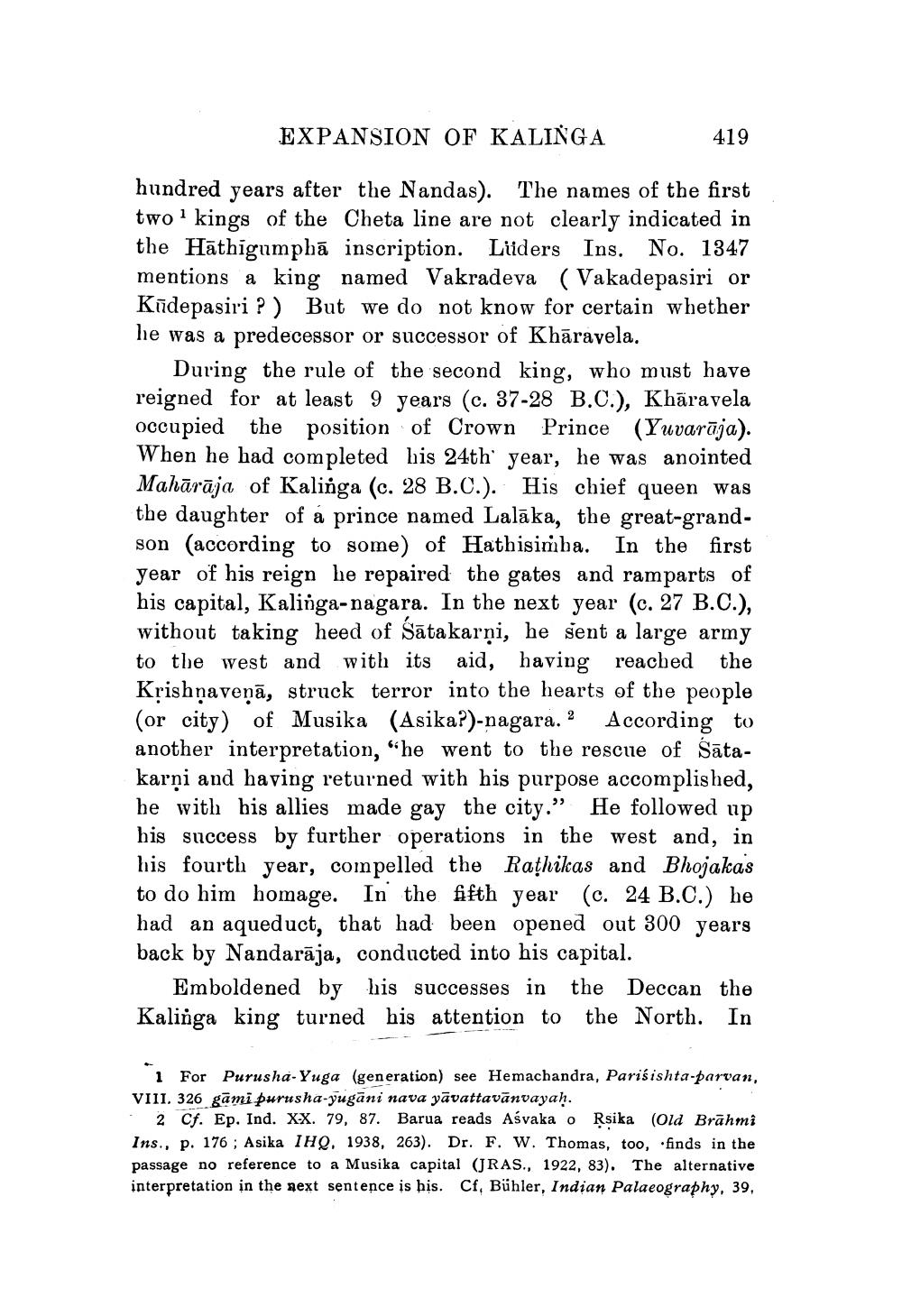________________
EXPANSION OF KALINGA
419
hundred years after the Nandas). The names of the first two 1 kings of the Cheta line are not clearly indicated in the Hāthigumphā inscription. Liiders Ins. No. 1347 mentions a king named Vakradeva (Vakadepasiri or Kūdepasiri? But we do not know for certain whether he was a predecessor or successor of Khāravela.
During the rule of the second king, who must have reigned for at least 9 years (c. 37-28 B.C.), Khāravela occupied the position of Crown Prince (Yuvarāja). When he had completed his 24th year, he was anointed Mahārāja of Kalinga (c. 28 B.C.). His chief queen was the daughter of a prince named Lalāka, the great-grandson (according to some) of Hathisimba. In the first year of his reign he repaired the gates and ramparts of his capital, Kalinga-nagara. In the next year (c. 27 B.C.), without taking heed of Sātakarņi, he sent a large army to the west and with its aid, having reached the Krishṇaveņā, struck terror into the hearts of the people (or city) of Musika (Asika?)-nagara. 2 According to another interpretation, "he went to the rescue of śātakarņi and having returned with his purpose accomplished, he with his allies made gay the city.” He followed up his success by further operations in the west and, in his fourth year, compelled the Rathikas and Bhojakas to do him homage. In the fifth year (c. 24 B.C.) he had an aqueduct, that had been opened out 300 years back by Nandarāja, conducted into his capital.
Emboldened by his successes in the Deccan the Kalinga king turned his attention to the North. In
1 For Purusha-Yuga (generation) see Hemachandra, Pariśishta-parvan, VIII. 326 gāmi purusha-yugāni nava yāvattavānvayah.
2 Cf. Ep. Ind. X.X. 79, 87. Barua reads Aśvaka o Rsika (oid Brahmi Ins., p. 176; Asika IHQ. 1938, 263). Dr. F. W. Thomas, too, finds in the passage no reference to a Musika capital (JRAS., 1922, 83). The alternative interpretation in the next sentence is his. Cf, Bühler, Indian Palaeography, 39,




